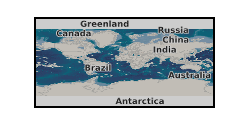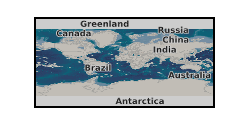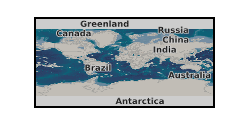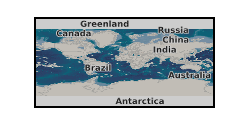Earth Sciences, University College London
Type of resources
Topics
Keywords
Contact for the resource
Provided by
Years
Formats
Update frequencies
-

Radiographic images of pyrope samples synthesised at pressures of 4-15 GPa, all collected at 2.5GPa and temperatures from 773 to 1573K. The samples are deformed sinusoidally at strains of up to 5 mimcrostrain and periods from 10s to 360s – 10 frames of images were collected per cycle for a total of 1000 frames. Data collected at NSLS X17B2 using the deformation-DIA press until its closure, thereafter collected at the replacement beamline at APS using the same press. These data are currently being prepared for publication. Similar images were collected on polycrystalline San Carlos Olivine samples either dry or wet to investigate the effect of water on grain boundary strength and the data are also archived here.
-

Log file and GSAS data files for synchrotron study of NaMnF3. Diffraction patterns from synchrotron experiments on NaMnF3. NERC grant: Understanding the D' zone: novel fluoride analogues to MgSiO3 post perovskite NERC grant abstract: The thermal boundary layers of a convecting system control many aspects of its style of convection and thermo-chemical history. For the silicate Earth these boundary layers are the lithosphere, whose low temperature and high rigidity induces slab-style downwellings, and the D' region on the mantle side of the core-mantle-boundary (CMB). The D' region is the source of plume-style convection and regulates heat exchange from the core to the silicate Earth. The lower thermal boundary is made more complex by the existance of a phase transition in the most common mineral in the lower mantle (magnesium-silicate perovskite) which changes the properties of the D' region at the CMB. Unfortunately, most of these properties cannot be measured at the extreme pressures (120 GPa) of stabilisation of the post-perovskite phase. The best chance of constraining them is through a combination of measurements on low-pressure analogue materials (which have the same crystal structure but a different chemical composition) and ab initio simulations of both the analogue and natural systems. We have recently developed a set of ABF3 analogues whose properties are much more similar to MgSiO3 than are those of the CaBO3 analogues currently in use. We propose, therefore, to use these improved fluoride analogues to determine the properties of post-perovskite which control the dynamics of D' (phase diagram, pressure-temperature-volume relations, viscosity, slip systems and thermal diffusivity). These measurements will allow models to be developed which accurately predict the behaviour of the lower thermal boundary layer of the mantle. This will place coinstraints on (1) the heat budget, dynamo power and start of crystallisation of the inner core, (2)the vigour of plumes, (3) the ratio of underside heating to internal heating in the mantle and, (4) the radioactive element budget of the silicate Earth.
-

Synchrotron X-radiography (images) and diffraction data collected to measure rheology of Quartz coesite and stishovite.
-

Synchrotron X-radiography (images) and diffraction data collected to measure anelasticity of zinc. NERC grant NE/H016309/1 - Experimental determination of mantle rheology. NERC grant NE/L006898/1 - The strength of the lower mantle.
 BGS Data Catalogue
BGS Data Catalogue